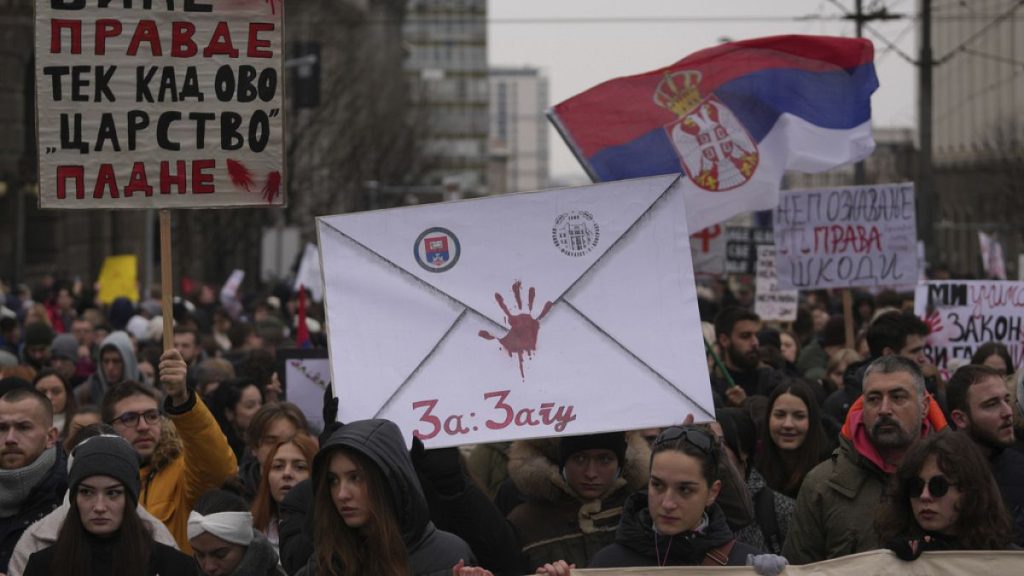Daily street protests are ongoing in Serbia demanding accountability for the collapse of a concrete awning at a train station in Novi Sad that resulted in the deaths of 15 people. University students, citizens, and high school students organized protest actions across the country, holding a commemorative event to honor the victims of the tragedy. The collapse occurred on 1 November at the newly renovated Novi Sad train station, sparking outrage and demands for justice. Serbian university students left piles of old school books outside the Education Ministry building as part of their almost daily protests.
The protests in Serbia have continued with scattered traffic blockades held in various locations at 11:52 am, the exact time the collapse occurred, with each blockade lasting 15 minutes in honor of the 15 victims. Many believe that widespread corruption and negligence in the renovation of the railway station in Novi Sad contributed to the tragedy. The protests also reflect wider discontent with the rule of President Aleksandar Vučić and his government, with tens of thousands joining a big rally in Belgrade led by university students. A government minister was among 13 people arrested in connection with the incident, but their subsequent release raised doubts about the transparency of the investigation.
The protests in Serbia have gained momentum, with striking university students gathering support from various sectors of society. The symbol of the movement, a red handprint indicating authorities have blood on their hands, has been embraced by actors, farmers, and others supporting the protests. The demonstrators are challenging the tight grip of power held by President Vučić’s government, demanding accountability and justice for the victims of the Novi Sad tragedy. The persistent protests reflect widespread anger at the accident and highlight broader concerns about corruption and governance in Serbia.
The daily protests in Serbia have put pressure on authorities to address the issues surrounding the collapse of the awning in Novi Sad. The protesters are demanding accountability for the tragedy and calling for justice to be served. The involvement of university students, citizens, and high school students in the demonstrations has brought attention to the need for transparency and accountability in government projects. The protests have also highlighted wider discontent with the current government and its handling of the situation.
The ongoing protests in Serbia have drawn attention to the need for greater oversight and accountability in infrastructure projects. The collapse of the concrete awning at the Novi Sad train station has raised concerns about the quality of construction and the potential risks associated with improper renovations. The protests have also underscored the importance of public safety and the need for thorough investigations into incidents that result in loss of life. The demonstrations have united various groups in Serbia in a common goal of seeking justice for the victims and holding those responsible for the tragedy accountable.
In conclusion, the protests in Serbia following the collapse of the concrete awning at the Novi Sad train station have galvanized widespread anger and discontent with the government. The ongoing demonstrations have demanded accountability for the tragedy and justice for the victims, highlighting broader concerns about corruption and negligence in infrastructure projects. The involvement of university students and various sectors of society in the protests underscores the need for transparency and oversight in governance. The movement in Serbia continues to push for change and challenge the authority of the current government, calling for greater accountability and justice in the wake of the Novi Sad tragedy.


